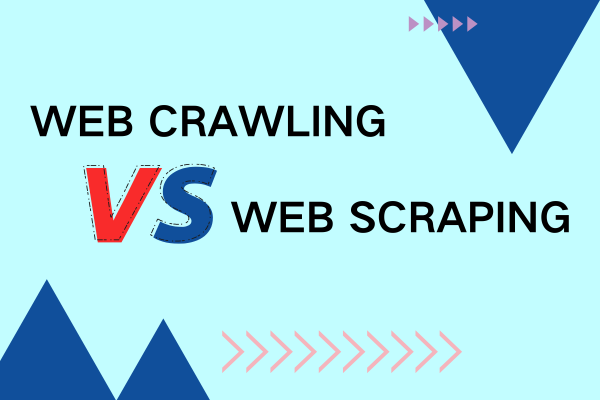
Introduction: Navigating the Digital Data Extraction Landscape
In the intricate world of digital information retrieval, web crawling and web scraping represent two powerful yet distinctly different methodologies for extracting and processing online data. While they might seem similar at first glance, these technologies possess unique characteristics that set them apart in the complex ecosystem of data collection and analysis.
Imagine you‘re a digital explorer, navigating the vast and ever-expanding internet landscape. Web crawling and web scraping are your primary tools for understanding, mapping, and extracting valuable insights from this digital terrain. But how do these technologies differ, and why should you care? Let‘s embark on a comprehensive journey to unravel their intricacies.
Historical Context: The Evolution of Web Data Extraction
The origins of web crawling and web scraping can be traced back to the early days of the internet, when search engines and researchers began developing sophisticated methods to navigate and understand the rapidly growing digital information space. In the late 1990s and early 2000s, these technologies emerged as critical components of internet infrastructure, enabling unprecedented access to online information.
Web crawling initially developed as a mechanism for search engines like Google to index and catalog web content. These early crawlers were relatively simple, systematically following hyperlinks and creating comprehensive maps of the internet. As the web grew more complex, so did the technologies used to navigate and extract information.
Web scraping, on the other hand, evolved from more targeted needs—businesses, researchers, and individuals seeking specific data points from websites. What began as manual copy-and-paste processes transformed into sophisticated automated extraction techniques that could retrieve, process, and analyze vast amounts of digital information.
Technical Foundations: Understanding the Architectural Differences
Web Crawling: The Digital Cartographer
Web crawling is fundamentally a discovery and indexing process. Think of a web crawler as a digital librarian meticulously exploring and cataloging an ever-expanding library of online resources. These sophisticated software programs, often called "spiders" or "bots," systematically browse the World Wide Web, following hyperlinks and creating comprehensive indexes of web content.
The architectural complexity of web crawlers involves several critical components:
- URL Frontier Management: A dynamic queue system that manages and prioritizes URLs to be explored.
- HTML Parsing Engine: Advanced algorithms that interpret and extract structural information from web pages.
- Content Indexing Mechanism: Systems for organizing and storing discovered web content.
- Politeness Protocols: Mechanisms to respect website bandwidth limitations and avoid overwhelming servers.
Mathematical Representation of Crawling Efficiency
We can represent crawling efficiency through a sophisticated formula:
[Crawling Efficiency = \frac{(Pages Indexed) (Unique Content Ratio)}{(Time Elapsed) (Server Load Factor)}]This formula captures the multifaceted nature of web crawling, considering not just the quantity of pages explored but also the quality and efficiency of the exploration process.
Web Scraping: Precision Data Extraction
Web scraping represents a more targeted approach to digital information retrieval. Unlike broad-based crawling, web scraping focuses on extracting specific, predefined data elements from designated web pages. It‘s akin to a skilled surgeon precisely extracting critical information from complex digital environments.
Key architectural components of web scraping include:
- Selector Algorithms: Advanced methods for identifying and extracting specific data elements
- Dynamic Content Rendering: Techniques for handling JavaScript-generated content
- Data Cleaning Pipelines: Processes for transforming raw extracted data into structured formats
- Anti-Blocking Mechanisms: Strategies to circumvent website restrictions and maintain extraction capabilities
Practical Applications and Use Cases
Search Engine Optimization and Digital Marketing
Web crawling plays a pivotal role in search engine optimization (SEO). Search engines like Google use sophisticated crawlers to understand website structures, index content, and determine search rankings. For digital marketers, understanding crawler behavior becomes crucial in developing strategies to improve online visibility.
Market Intelligence and Competitive Analysis
Web scraping emerges as a powerful tool for businesses seeking competitive intelligence. Companies can extract pricing information, monitor competitor strategies, and gather market insights with unprecedented speed and accuracy.
Technological Challenges and Ethical Considerations
The rapid evolution of web crawling and scraping technologies has introduced complex ethical and technical challenges. Websites increasingly implement sophisticated anti-scraping mechanisms, including:
- IP-based rate limiting
- CAPTCHA systems
- Dynamic content rendering
- User behavior analysis
Responsible practitioners must navigate these challenges while maintaining ethical standards and respecting website terms of service.
Future Trends: AI and Machine Learning Integration
The future of web crawling and scraping lies in the integration of artificial intelligence and machine learning technologies. Advanced neural networks and adaptive algorithms are transforming these processes, enabling:
- Intelligent content recognition
- Predictive parsing techniques
- Adaptive extraction strategies
- Enhanced data quality assessment
Conclusion: Mastering Digital Information Retrieval
Web crawling and web scraping represent powerful technologies that continue to evolve, offering unprecedented capabilities for understanding and extracting digital information. By understanding their unique characteristics, technical foundations, and potential applications, you can leverage these tools to gain valuable insights in an increasingly data-driven world.
Whether you‘re a researcher, business professional, or technology enthusiast, mastering these techniques opens doors to a wealth of digital knowledge waiting to be discovered.










